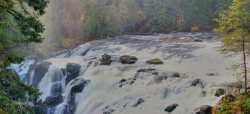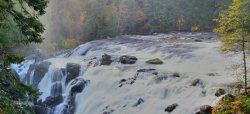I was trying to create a single image HDR, but no luck.
I have one image that is a JPEG, and on PS CS3 it wont let me do single file HDR, but on Photomatrix it has a "single file conversion" option. When I click it, and select my image folder, then my image, it will say something like batch error?
I tried it also with a RAW image from my Samsung GX-1S, but it wont work with that either.
Lil help and knowledge please?
I have one image that is a JPEG, and on PS CS3 it wont let me do single file HDR, but on Photomatrix it has a "single file conversion" option. When I click it, and select my image folder, then my image, it will say something like batch error?
I tried it also with a RAW image from my Samsung GX-1S, but it wont work with that either.
Lil help and knowledge please?




